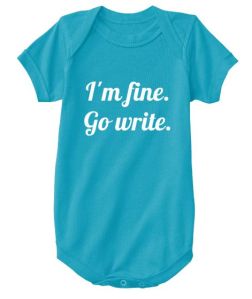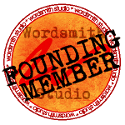
Fern Street, West Palm Beach, FL, 2016. c. Elissa Field
Not gonna sugar coat it: it’s been a rough week here. Got my grading in for the quarter ended Friday, so ready for writing and time with my kids for spring break. Instead: we spent 3 days in vigil as our awesome boxer, Gracie, was dying. She was all we could think about, yet I’ve barely had time to grieve, as I wrote 14 hours straight to make Sunday deadlines. I’m still under the gun with one more due… and want little more than to catch my breath.
I’m not alone in balancing writing with teaching — it’s a common overlap. Nor am I alone in wrestling this competition for time. It’s great to have assignments due, but it’s sometimes heartless when you can’t stop for life’s bigger moments.

Watching for snow. c. Elissa Field
Our dog Grace has been an amazing family member. Condolences for her poured in on Facebook from people who know her from posts or from car lines at school when my kids were younger. Like other writers here, she was part of my work, too. How many of our days have we had a dog or cat keeping us company through long hours writing? How many times have we joked about all they do to steal attention from our drafts and keyboards? As well as I know writing, editing and agenting friends around the world, I remember the names and faces and stories about the dogs and cats who warm their days, and sad stories of their passing. They have our gratitude and love. So I can’t share this post without mentioning how deeply we feel her loss.
That said, this week’s Friday Links for Writers is full of some really great articles from this week. One gives brass tacks advice for formatting. Two are inspiration from poets for World Poetry Day. More: an international prize, campaigns to stop federal budgets that would upend the NEA and NEH, security advice for journalists from the CPJ… As always, share your thoughts in the comments to let us know how your writing week has gone, or to share your own best reads of the week. Have a great writing week, all.
* * * * *
How to Format a Book: 10 Tips Your Editor Wants You to Know
These 10 tips are a great checklist for anyone getting a manuscript ready for an editor or full read. Brass tacks advice, from not double-spacing after periods to best formatting for paragraph indents.
 13 Authors on the Life Changing Impact of the NEA
13 Authors on the Life Changing Impact of the NEA
In the face of Trump’s threatened budget cuts to arts, including the NEA and NEH, 13 writers share with Electric Lit how the NEA impacted their lives. Some really great stories, here, from Tayari Jones and more.
The risks to the NEA and NEH were central to lots of messages around the web this week, with a push to call your representatives to resist eliminations of this programming.
What do these amazing books have in common (other than being amazing)? Their authors/creators have all been funded in some part by @NEAarts! pic.twitter.com/v18yASvszL
— Parnassus Books (@ParnassusBooks1) March 18, 2017
//platform.twitter.com/widgets.js
Shortlisted for the EFG Short Story Award
The Times shares a link to the EFG Short Story Award website, where you can read stories selected for the prize’s short list. The £30,000 prize is the “richest” award for a single story in the English language. This year’s short list includes stories by Kathleen Alcott, Bret Anthony Johnston, Richard Lambert, Victor Lodato, Celeste Ng, and Sally Rooney.

Glory Edim
Brooklyn 100 Influencer: Glory Edim, Founder, Well-Read Black Girl
Book love, these days, is not just a matter of what we read, but — for many of us — making an effort to advocate for marginalized voices. If you’ve ever wondered how these kinds of literary advocates get started, check out this interview with Glory Edim, the founder of Well-Read Black Girl.
I’ve followed the Committee to Protect Journalists in the (unfortunately) nearly 5 years since journalist Austin Tice went missing in Syria. The CPJ is admirable in providing a voice and conduit for information related to persecution of journalists around the world. This link takes you to one of their survival guides — approaches recommended for journalists and photographers to keep safe while working in heated environments.
 15 Favorite 1st Lines from Books from the Past 5 years
15 Favorite 1st Lines from Books from the Past 5 years
This blog post on Goodreads recognizes that most of us have appreciated articles with famous first or final lines from classics… But what about favorite books from recent years? Especially for writers revising with attention to those opening pages, these give an interesting cross section of opening lines.
The Weird Things People Leave in Books
Claire Fuller (author of Swimming Lessons) reflects on how readers leave their marks on books. Marks and a bit of wear and tear show a book was loved. But that’s nothing to the odd list of things librarians told Tin House that they’d found between pages.
For World Poetry Day:

Interview w Airea Matthews on Lit Hub
Airea D. Matthews: Texting with Anne Sexton
I always like to end these lists with inspiration from one writer, and I really loved Peter Mishler’s interview with poet Airea D. Matthews on Lit Hub. Completely different entry point led to a series of her poetry: “For about a year, I set up a secondary text account and sent messages to an imagined Sexton, which I began to transcribe and edit into the Sexton Texts poems.” Great read.
Maggie Smith Reads “Good Bones”
I discovered Maggie Smith on Twitter almost a year ago when her poem “Good Bones” went viral in the aftermath of one of the many world hardships we all sought to understand. Here, a profile on Ohio State’s website, and a recording of Maggie reading the poem.
* * * * *
What Are You Working On?
What is your current writing goal? What resources or strategies have kept you moving forward? Share your thoughts or links you’ve found helpful in the comments.
* * * * *
Want to be notified of further posts? Regular readers will know that I am glad to connect with other writers. Please do say hello or share your own experiences in the comments. While finishing my Master’s and completing this novel, I am not posting at regular intervals to this site, so it’s a good idea to use the WordPress follow button, or subscribe using the email option, to keep track of future posts. Both are on the sidebar (or footer, in mobile app).
I am always active on Twitter and Facebook, so it’s easy to connect with me there: Twitter @elissafield or Facebook.

Notes of scene and personality of my character, scribbled in the margins while reading Ann Hood’s Creating Character Emotions.
- My Spring Reading List 2016
- Writing Character: Sometimes the Work is Messy
- Novel Revision Strategies: Printing for Read Through
For more Friday Links for Writers:
- Friday Links for Writers 01.06.17
- Friday Links for Writers: Quirky Research Sources for Writers #3 — another Quirky Research Sources issue will post this month
- Scan summaries of the links shared on mostFriday Links posts: hover over individual post-titles listed on the Links & Where to Find Me page





 Danai Gurira’s Advice to Young Female Writers: ‘Go Where You Are Loved’
Danai Gurira’s Advice to Young Female Writers: ‘Go Where You Are Loved’



 Emily Carpenter,
Emily Carpenter,  Sara Novic,
Sara Novic,  n, gravedigger wit of this first time around — but the advice rings much more somber, post 9/11.
n, gravedigger wit of this first time around — but the advice rings much more somber, post 9/11.

















































